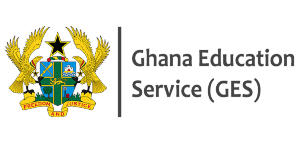Recent Competitor Analysis reports released by the Ghana Export Promotion Authority (GEPA) are admonishing Ghanaian exporters of several identified agricultural products to retain primary focus on their existing potential markets outside the continent even with the implementation of the Africa Continental Free Trade Area, expected to commence by the middle of this year.
This has become necessary since, even as AfCFTA implementation commences in July this year, research suggests it is more likely that neighbouring African countries around Ghana will be competitors rather than export market destinations with regards to most agricultural products.
Instructively, a recent report released by the International Trade Centre (ITC) on diversifying trade in Africa has recommended the need for African countries to develop a regional strategy due to the degree of overlap of sector priorities – and actual agricultural export products at the country and regional level.
The report warns that overlapping sector priorities could become a potential source of tensions during AfCFTA negotiations and its subsequent implementation and thus it is imperative to institute key measures to address them.
Neighbouring countries find themselves very often prioritising the same type of agricultural products. Examples of such products include cashew, cassava, yam and various foodstuffs being prioritised by Ghana, Benin, Burkina Faso, Mali, Côte d’Ivoire, Gambia as well as countries outside the region such as Tanzania among others.
With the operationalization of AfCFTA, GEPA is consequently advising Ghana’s exporters of agricultural products – in particular cassava and yam exporters – to engage in intensive export drives, but focus more attention on increasing their markets share in the European market as well as holding on to their existing export destinations such as the United States of America since those countries have increasing demand for both cassava and yam.
Regarding cassava export, GEPA has identified new potential markets – being Turkey, Spain, Portugal as well as Rwanda – with significant average growth rate, favourable tariff regime and geographical proximity, to be explored for diversification and penetration by Ghana’s exporters of the product.
Concerning yam export, exporters have been advised to increase export volumes in order to regain market share, adding that given the positive growth in Indonesia and the population dynamics, serious attention must be given to that market.
Key Highlights
Globally, Ghana’s export of cassava over the years has been insignificant compared to the leading exporting countries such as Thailand, Cambodia, Vietnam with annual export values of US$ 888 million, US$ 434 million, US$ 151 million respectively.
The United Kingdom and United States of America remain the top two (2) largest export destinations for Ghana, but with low import values of US$143,000 and US$118,000 respectively, yet still accounting for about 59.7 percent of Ghana’s total cassava export in recorded in 2018.
The performance of Ghana’s cassava export has seen a nine percent decline, recording US$508,000 in 2017 as against US$437,000 in 2018 in export value.
Reports indicate that the global cassava processing market grew at a Compound Annual Growth Rate (CAGR) of around 2.6 percent from 2011 to 2018, reaching a production volume of around 253.4 million tons in 2018 and its market volume and value are projected to expand largely between 2019 to 2024 due to increasing global demand.
With 38 market destinations, exports of yam from Ghana rather saw an increase from US$ 32.599 million recorded in 2017 to US$37.986 million in 2018. In terms of global ranking of countries that exported the product, Ghana garnered the 6th position.
The USA was the largest market destination for yam from Ghana with estimated imports of US$14.355million of the product in 2018 compared to US$12.929million and US$10.585million for 2017 and 2016 respectively.
Business News of Sunday, 19 January 2020
Source: www.goldstreetbusiness.com

















